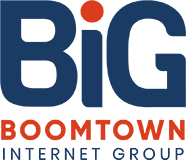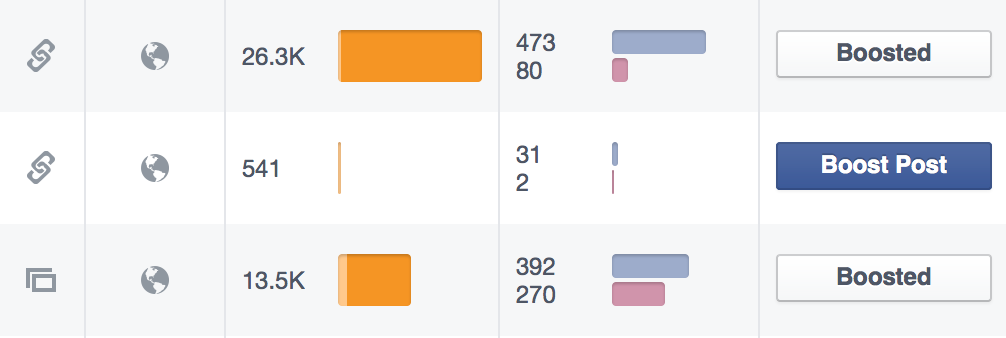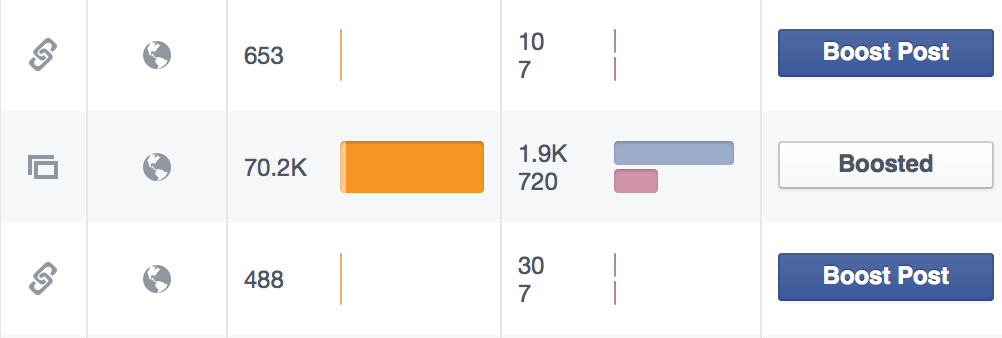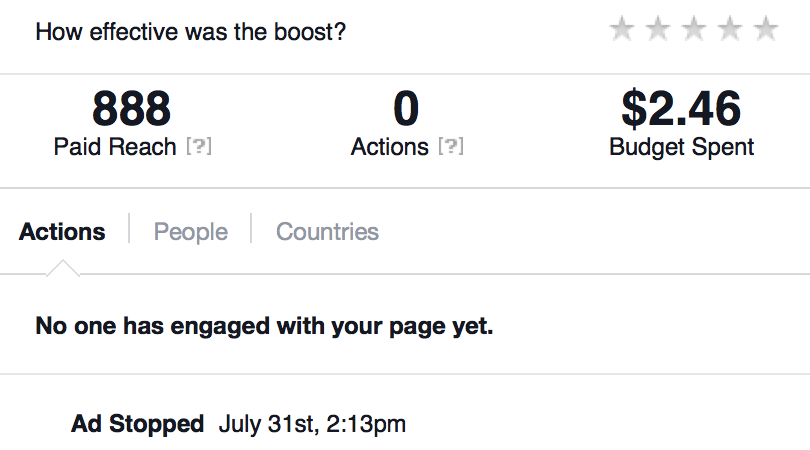Anyone involved in SEO, digital marketing, or social media is now aware that Facebook has dramatically altered its algorithms for business pages in recent months. Facebook posts now organically reach only about 10% of a page’s audience. With this development, many businesses have chosen to utilize Facebook’s new “boost” feature: the business pays Facebook a certain amount of money to show its post to more people. (The more money you put up, obviously, the more people see your content).
A nice feature of the post boost is that you can target your demographic: either people who like your page and their friends, or specific age groups, locations, and interest groups that you choose (but not both, for some reason). Boosts are also nice because they give you control over individual pieces of information and who you want to see them. So, for example, a business could promote a generic sale to a targeted age and interest group outside of its existing page likes, and then promote an offer having to do with loyalty points amongst already existing customers. By knowing exactly who you’ll be reaching, it’s much easier to tailor your content appropriately.
Clicking “boost” on a post doesn’t guarantee success, however; content is still king, as they say. A boosted post is only guaranteed to be shown to more people – it’s not a guarantee of increased engagement.
For example, the posts on the top and bottom of this image were boosted around the same time. (If you’re not familiar with looking at Facebook without context, the orange section refers to how many views the post got, where the blue and purple bars denote likes and shares, respectively.) The post on the top was boosted for about twice as much money as the post on the bottom, which you can tell by looking at the difference in the number of views. However, the post on the bottom received a much higher rate of engagement and many more shares (the golden ticket of Facebook interactions) than the post on top. So while Facebook boosts helped us reach more viewers with the top post, the content on the bottom was more interesting to those who came across it and therefore generated more value for us.
Facebook’s new algorithm has also created a situation where it is very difficult to generate much valuable engagement on an organic post. (I won’t say impossible, but if you’re not a seasoned social media guru, it’s bloody hard). For example, here’s a boosted post with above average results sandwiched in between two organic posts with above average results.
The content on the top and bottom generated more engagement than an organic post normally would on this page, and that’s because these posts were important. One was a guest blog, and another was a Google Hangout with a professional in this client’s field. Though they were important brand-wise, we chose not to boost these two posts purely for financial reasons – we were not going to receive any direct ROI from a Google Hangout or a blog post. The post in the middle, however, we chose to boost because it was about a big sale the client was having. It received a lot of engagement – so much more than either organic post. It brought hundreds of clicks directly to the site’s sale page. But you can see that the difference is immense between the organic and the posted posts purely from a Facebook engagement standpoint.
Another issue we’ve had in the past with boosting posts is that Facebook’s guidelines are very secretive and very strict. If you’ve used your own personal Facebook account recently, you may have noticed Facebook asking you a lot of questions about what your News Feed looks like. It will ask you if a certain post “feels like an ad,” or if you think it’s “trying to sell you something.” (For example, I recently “unfollowed” someone who I don’t know very well and who is constantly posting photos of her child. Facebook followed up with a dozen questions about whether or not I was blocking this person because she was trying to sell me something.) From these types of responses, Facebook has created an algorithm that does not allow ads of a certain type to be boosted (because they refuse to clutter people’s News Feeds with ads. As a social media marketer, this makes me sad. As a Facebook user, though, I’m glad.) This post, for example, was “un-boosted” by Facebook before it had even come close to exhausting its set budget because Facebook thought there were too many words on the image, which made it look like an ad.
In a backwards way, though, I think it’s helpful that Facebook has given us such specific hints about what the average Facebook user does and does not want to see. They’ve given us the tools to create social media campaigns that engage people and generate value.
So, from these experiences, here is my list of ways to better your Facebook marketing approach:
- When it comes to generating content, quality > quantity. Don’t just write “look at our new blog post!” Write instead, “How many of these mistakes have you made with your [insert product here]?” (Or some sort of call to action that’s relevant). I like to think of social media as an actual social experience, and therefore adhering to the same rules as real-life socialization: the more you reach out to others, the more they’ll reach back.
- Boost important posts (if you can) about once per week. You don’t want to smack people in the face every day with your brand, but reminding them gently of your presence in their social world never hurts.
- Think like your audience. (Which in this case, isn’t that hard to, seeing as most of us ARE on Facebook.) And by this I mean, make your boosted posts look less like ads (and less like click bait) and more like socially appealing points of interest. Some good ways to do this are:
- Add an image to posts that are otherwise just text and/or a link. Images generate by far more engagement than any other type of post.
- Use an app like Rhonna Designs, Popkick, Camera+, or RetroMatic. (On Android, try Cupslice, PicSay, or, if you’re well-versed in internet memes, Rage Comics Photo Editor.) You can plug in your promotional photos and play with them a bit to make them more appealing and shareable on social media.
- Utilize your human resources. Ask your coworkers and your clients to interact with your work on their page. People are much more likely to engage in an already-established discussion than to start one from scratch on your page. (At times I’ve even asked my friends to like or comment on posts I’ve made on behalf of clients. They’re on Facebook all the time anyway, and they never mind.)
If you’ve got any social media marketing tips of your own, comment below. New ideas are what the game is all about!





